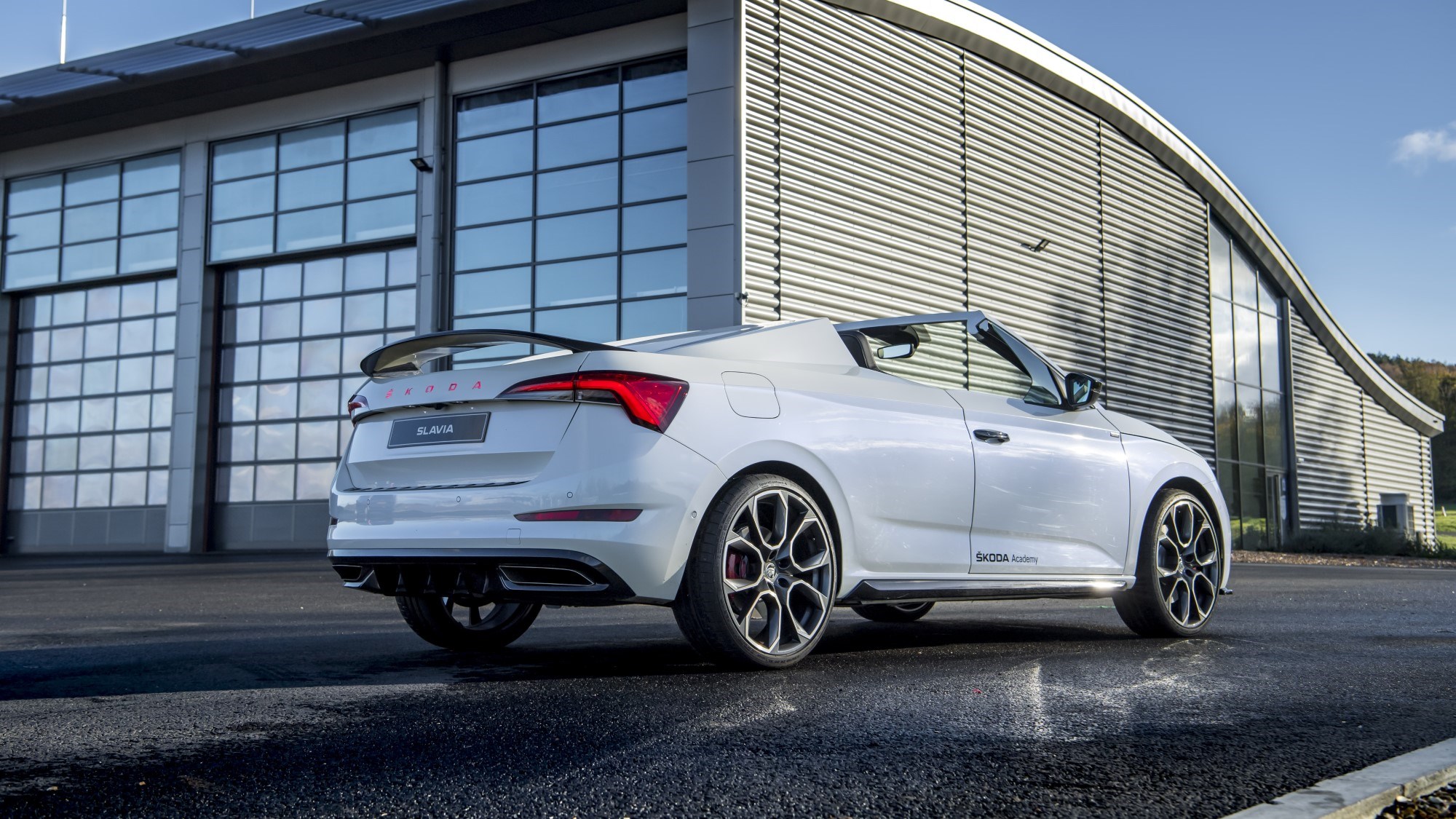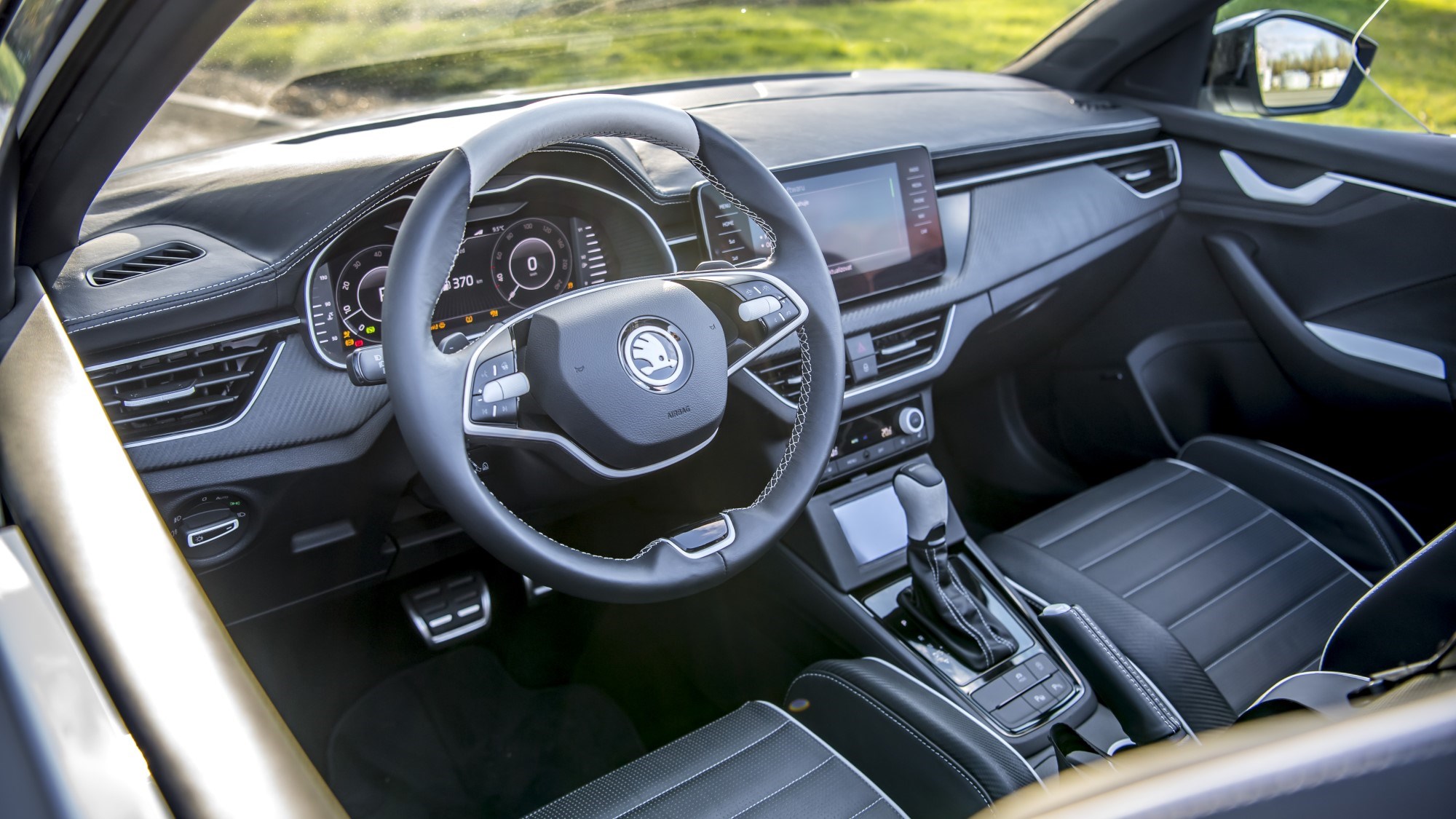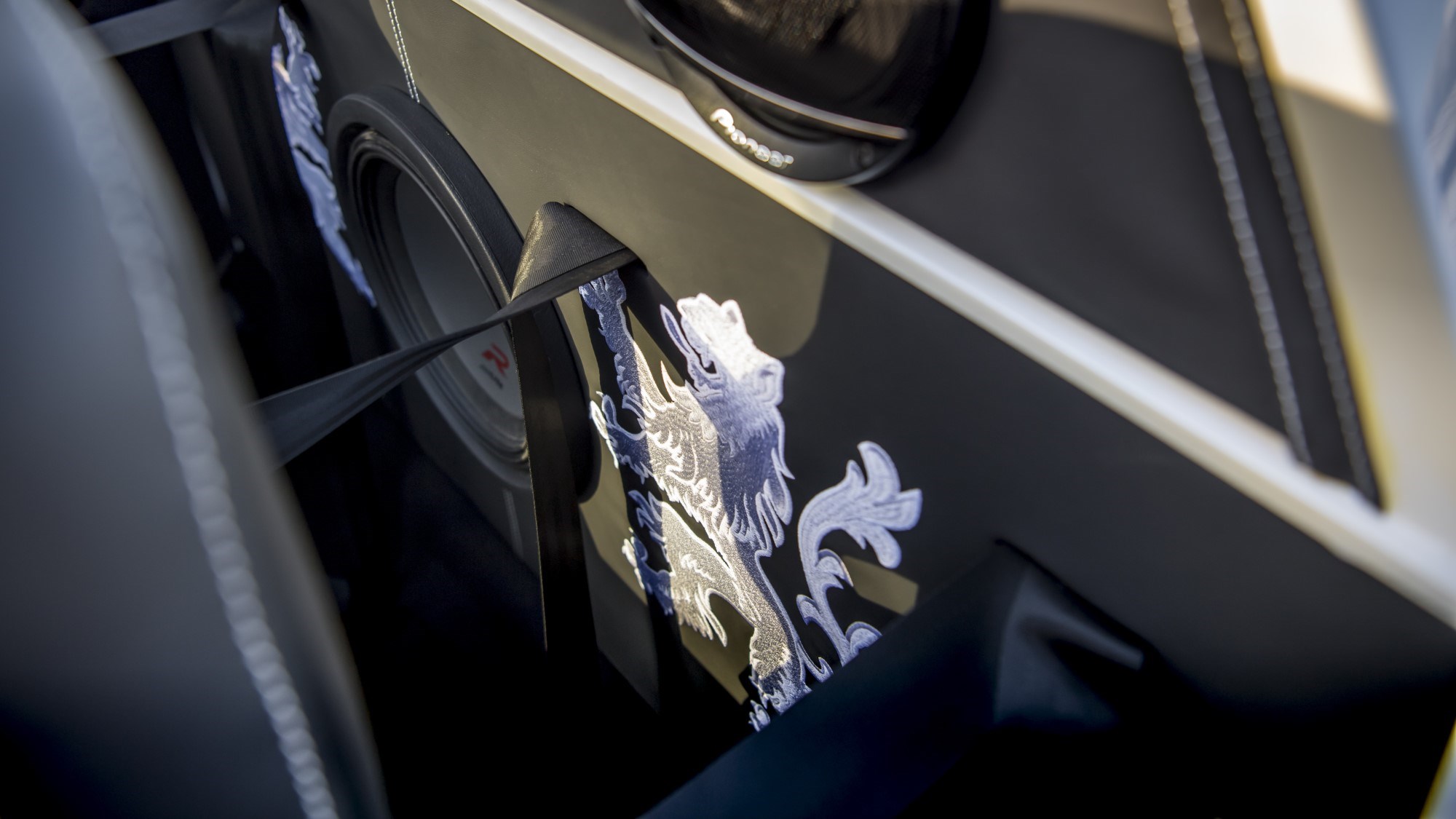► Skoda’s yearly apprentice project tested
► Slinky speedster is based on the humble Scala
► Racing seats, stereo upgrade and a shouty exhaust all feature
Every year Skoda lets its student apprentices loose to create their ‘dream car’ – and despite the pandemic, 2020 is no exception. This year, that same apprentice (or ‘Azubi’) programme has produced something seriously striking. Say hello to the Skoda Slavia.
If you’re not familiar with the Azubi programme, it’s the yearly project car of a team of around 30 apprentices from the Skoda Academy and the Skoda Secondary Vocational School of Engineering. Their brief is to create a new concept, based on an existing production model and finished to the point where it can be driven as a fully working prototype.

Inspired by a series of projects in the 1970s, the current Azubi programme’s been going since 2014, and has produced everything from a Citigo roadster to a Fabia pickup to an incredible off-road Kodiaq Ute.
Driving the Skoda Mountiaq: a wilderness-ready Kodiaq
So what is the Skoda Slavia?
The Slavia takes its name from the first bicycle produced by Skoda founders Vaclav Laurin and Vaclav Klement, and celebrates the firm’s 125th anniversary – though it didn’t move into car production until the 1900s.
Like other Azubi projects, it’s based on humble underpinnings – beneath the Slavia’s slinky bodywork lies the chassis and running gear of a Skoda Scala hatchback. This year, with Skoda’s 125th anniversary celebrations, the team were allowed to go a bit crazier than usual, which is why apart from the front end the Slavia is almost unrecognisable as a Scala.
It now takes the dramatic form of an open-topped spider, with a long rear deck, two-seat interior and twin bulges behind the seats. The windscreen’s been lowered, the rear doors welded shut, and reinforcement added to the underbody to improve rigidity sans roof.

With only two seats, the boot’s massive – and there are straps within to store a Skoda e-scooter, underneath the boldly creased rear hatch containing a light-up Skoda logo with both a third brake light and the reversing light concealed within.
Aerodynamics were actually given considerable thought, so the speedster humps and rear spoiler are functional as well as aesthetic. Other visual improvements include 20-inch alloy wheels lifted from the Kodiaq vRS.
As for the interior, it’s mostly unchanged from the Scala – the team left the dashboard, infotainment screen and virtual cockpit unchanged. But they did add heavily bolstered sports seats with racing harnesses, who’s white stitching is mirrored on the steering wheel and gear selector.
Skoda Scala review
And, being created by students, there’s also an uprated audio system with a 2,250w subwoofer as well as two decorative heraldric lions stitched behind the seats.

Mechanical changes are limited. The aforementioned alloy wheels hide the braking system and wheel hubs from the Kodiaq vRS, while underneath is a very antisocial – but rather fun – modified exhaust system. The rest, including the 1.5-litre 148bhp petrol engine and seven-speed DSG automatic, is unchanged.
What’s it like to drive?
A few laps of Millbrook test centre is all we get in the Slavia, but that’s all that’s needed. The Azubi cars – especially those with extensive body modifications, like this one – are more decorative than functional, so while the Slavia is fully driveable we were asked to keep the speed below 40mph.
Getting comfortable in the huge sports seats is surprisingly easy – they’re even electrically adjustable – but the hollow clang of the door and the slightly unfinished panel immediately behind the seats gives away its pre-production status.

On startup, the exhaust is immediately obvious – and hilariously loud and obnoxious. This is the sort of thing that could only exist on a project car of this nature, but its sheer volume echoing around the valleys of Millbrook’s Alpine handling course definitely raises a grin.
The structural reinforcements certainly look to have done the trick – while the ride’s extremely firm on those 20-inch alloy wheels, there’s no real sense of this being a fest of scuttle shake and the torsional rigidity of a blancmange.
The powertrain is what feels most out of place here, despite being the underlying Scala’s most powerful option. That’s not to say it’s bad – as in any VW Group car thus equipped, it’s responsive, smooth and presumably fairly economical, and it’s a great pairing to the slick DSG gearbox. But should a Slavia ever make it to production, we’d hope for something with a bit more pep.
Verdict
All of this is largely academic, though, as are all of Skoda’s concepts – the brand has no intentions of putting anything more sporting into production, with its fast-but-practical Octavia vRS its halo model.
Luckily, though, the teams of Skoda apprentices will be around for a while yet, expressing their individuality through these brilliant yearly projects.